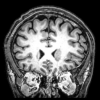Dozens of common viruses that transmit between humans are linked to nasty and serious chronic diseases.
For example, common viruses like Epstein-Barr virus (EBV), cytomegalovirus, Kaposi's sarcoma-associated herpesvirus, herpes simplex, coxsackievirus B1 to B6, echovirus, adenovirus 36, parvovirus B19 and bornavirus have all been found in patients with chronic diseases such as type 1 diabetes, cancer, atherosclerosis, Parkinson's, Alzheimer's, motor neuron disease, multiple sclerosis, heart disease, and so on.
Many of these viruses are highly prevalent in human beings. For example, EBV is found in around 90% of adults, cytomegalovirus in around 60%, parvovirus B19 in 60%, coxsackievirus B in 55%. Refs:
1 2 3 4
This is because humans are social animals, and we readily transmit these viruses to each other, especially living in crowded urban environments. Most of these viruses once caught cannot be eradicated from the body (at least not by current medical technology); they remain in the body for life, sometimes as low-level smoldering infections.
Some viruses have been proven to cause diseases (for example, EBV is proven to cause the cancer nasopharyngeal carcinoma). In other cases there is a link or association between a virus and a disease, but it is not yet proven that the virus causes the disease. For example EBV is strongly linked to multiple sclerosis (MS), but it's not yet proven that EBV causes MS (though it most likely will be proven soon).
So at the moment, we have suggestive evidence that most chronic diseases may be caused by common viruses in circulation, but this is not yet proven.
But for the sake of argument, let's say that in future we did prove that most chronic diseases are caused by viruses. If you knew that to be the case, what would you do, as a longevity enthusiast, to avoid getting infected with these viruses? Because a nasty chronic disease triggered by a virus can seriously affect your healthspan and lifespan.
Most of these common viruses are spread by saliva and respiratory secretions, so can be picked up by normal social contact, especially close social contact, like sharing a bathroom or kitchen. And especially by deep kissing your girlfriend or boyfriend, which shares saliva (these viruses are often found in the saliva).
So if you wanted to avoid contracting these infections, what would you do? Would you start wearing mask in public, and do this consistently for most of your life? That would be very hard. Would you reduce the number of meaningless relationships and one-night stands you have, to try to reduce the chances of catching a virus from kissing a near stranger? Would you move away from the crowded cities, and go and live in the rural countryside, to try to reduce your exposure to virus-carrying people?
If it were proven that common viruses can trigger nasty chronic diseases, how would you act on this information? What would be your strategy to reduce your chances of catching these infections, in order to reduce the total number of viruses you accumulate in your body as your life progresses?
To see which viruses are associated with which diseases, check this: List of Chronic Human Diseases Linked to Infectious Pathogens. (This article provides numerous study references that link viruses, bacteria and other pathogens to chronic diseases).
Edited by Hip, 07 August 2020 - 04:53 AM.


















































